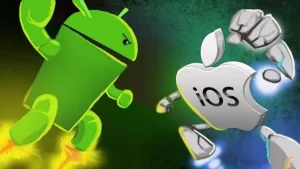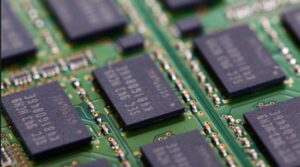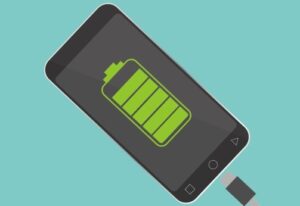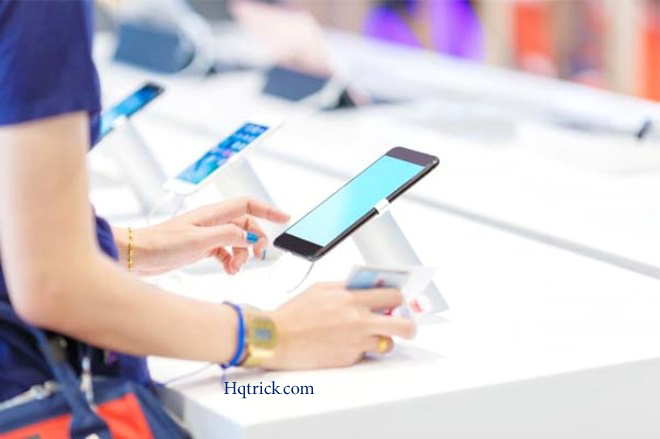When purchasing your new phone, it is important to consider several key factors in order to ensure that you find the perfect device that meets your needs.
The buying advice in this article covers important aspects such as memory capacity, camera quality, operating system, processor, battery life, screen, connectivity options, design, build quality, and price.
By carefully evaluating these factors, you can make an informed decision and find the perfect smartphone that aligns with your preferences and requirements.
Let us provide you with detailed guidance on everything you need to know about memory, camera, operating system, chipset, and more, so you can confidently choose the right mobile phone for you!
When it comes to purchasing a new smartphone, you will encounter a vast array of brands and models to choose from. It can be overwhelming and challenging to determine which one is the best fit for you.
In addition, it’s crucial to consider the longevity of the phone and whether it can meet your needs for several years without requiring an upgrade.
So, how can you make the right decision and find the perfect smartphone for your requirements?

Have you ever wondered what a smartphone is?
In simple terms, a smartphone is a hybrid device that combines the functionalities of a mobile phone and a laptop.
It is capable of performing typical computer tasks in addition to making calls and sending messages. With a smartphone, you can surf the internet, play games, store data on the built-in flash memory, and much more. Most smartphones also come with micro-USB ports for connecting to a computer and charging the battery.
Furthermore, smartphones typically have capacitive touch screens. However, they are generally more expensive compared to feature phones.
Summary of the key points to consider before purchasing your new smartphone:
- Operating System: Decide whether you prefer Android or iOS, and consider the latest version of the operating system to ensure access to the latest features and security updates.
- Performance: Consider your phone’s processor and RAM to ensure it can handle the tasks you want, such as gaming, multitasking, and running resource-intensive apps.
- Screen: Check the display quality, resolution, and size to ensure it meets your preferences for watching videos, browsing, and gaming.
- Camera quality: Consider camera specifications, including resolution, aperture, and features, if photography is important to you.
- Sensors: Ensure that the phone has sensors that will benefit you and make it easier to use.
- Storage: Check the phone’s internal storage and whether it’s expandable with a microSD card if you need ample storage space for apps, photos, and videos.
- Battery Capacity: Check the phone’s battery capacity (measured in mAh) to ensure it’s enough for daily use and can last all day.
- Sustainability: Consider the phone’s sustainability features, such as repairability, durability, and eco-friendly materials, to make a more environmentally conscious choice.
- Connectivity: Consider your phone’s connectivity options, such as 5G, Wi-Fi, Bluetooth, and NFC, to ensure it meets your needs for fast internet speeds and seamless connectivity to other devices.
- Brand reputation: Look for the brand’s reputation for reliability, customer service, and software updates to ensure you’re investing in a reliable and reputable phone.
- Budget: Determine your budget and compare prices, features, and specifications of different phones to find the best value for money within your budget.
- User Reviews: Read customer reviews and ratings to gain insights into real-world performance and user satisfaction for the phone you’re considering buying.
After understanding the summary of the key points, continue reading the rest of the article to learn the details of each of the aforementioned points in this comprehensive guide to buying your new phone.
Your new phone operating system
The operating system is the core of every smartphone and plays a crucial role in your daily tasks, such as writing messages, browsing the internet, installing and running apps, and more. Similar to Windows or macOS for your computer, the operating system shapes your work environment on your smartphone.
When it comes to purchasing a smartphone, one of the initial decisions you need to make is whether you want an iOS device, which is exclusive to Apple iPhones, or if you prefer an Android device from brands such as Samsung, Huawei, Sony, LG, and many others, which run on Google’s Android operating system.
In the following sections, we will assist you in selecting the right operating system for your needs by highlighting the features of each, as well as the advantages and disadvantages of both the iOS and Android systems.
Android Operating System

Developed by Google, Android is the world’s most widely used mobile operating system, outpacing other competitors such as Windows Mobile.
One of the reasons behind the popularity of the Android OS is that, unlike Apple, Google licenses its operating system to other companies. This allows manufacturers like Samsung or Huawei to quickly implement a functional operating system for their mobile phones, as well as make software modifications and collaborate on future releases.
Android’s open architecture, which grants access to the source code and allows for third-party software installations, is also a major selling point. Unlike iOS, which does not offer this level of freedom, Android users have the option to install apps from sources other than the official Google Play store, though caution is recommended to avoid malware.
If you are already familiar with Google services such as Gmail, Google Earth, Google Maps, or the Play Music streaming service on your computer, using Android on your mobile device will feel like second nature. Additionally, Google Drive for cloud storage and Google Home, a smart speaker with its intelligent voice assistant, offer a seamless ecosystem of applications and media that integrate with Android.
When choosing an operating system, it’s not just about the OS itself, but also the ecosystem of associated applications and media. If you heavily rely on Google services for your daily digital tasks, sticking with Android may be a logical choice, and may also impact your willingness to switch to a different OS.
In terms of technical advantages, Android may be limited for average users who do not delve into software customization, but it’s worth noting that iOS is generally considered more user-friendly compared to Android, which can sometimes seem more complicated.
Another advantage of Android is the wide range of price options available. Budget-conscious consumers can find Android phones for less than €100, while mid-range options priced between €300-€600 offer excellent hardware. In comparison, the older generation Apple iPhone XR, which is now two generations behind, still costs around 500 euros.
Android updates:
We need to address an important point that Android users often encounter challenges with, which is the update policy. Unless you own a Google Pixel (which is Google’s own smartphone line), you may have to wait a long time for your device to receive the latest version of the operating system, or in some cases, it may not receive an update at all. This is primarily because Google is not responsible for software updates on your device, but rather the manufacturer itself.
This means that the manufacturer receives the latest OS version from Google and then needs to adapt it to their own models before making the update available to their devices. This process can take a long time, and often there is no exact release date. This opaque update policy affects all manufacturers, big or small.
Huawei and Android
Huawei smartphones released after the Mate 30 series do not include Google services like Google Maps and Google Playstore. This is because the US government has banned cooperation between US companies and Huawei, citing concerns about potential security risks. The ongoing trade war between the US and China may have also influenced this ban. As a result of these sanctions, new Huawei smartphones operate on a basic version of Android without Google services, which are freely available.
Apple iOS

There are several compelling reasons to choose the iPhone.
Firstly, iPhones are renowned for their stylish and high-quality design, setting them apart in the market.
Secondly, iOS devices are widely recognized for their user-friendly and intuitive interface, seamlessly integrating with other Apple devices such as iPads, Macbooks, and iMacs. The settings are logically organized and easy to locate, and the pre-installed apps are of top-notch quality.
The seamless compatibility between the iPhone and other Apple devices is indeed one of the main advantages of choosing an iPhone. If you already own an iMac or iPad, opting for an iPhone makes sense as iOS makes it effortless to sync documents, messages, photos, and more via Apple’s iCloud.
In fact, you’ll often experience that iOS is faster and more efficient in practice, thanks to its intuitive user interface and seamless integration with other Apple devices.
IOS updates
iPhone (and iPad) users receive regular software updates for all current models. However, there is a small issue: after approximately five to six years, updates for the respective model expire. This means that devices older than iPhone 6 will no longer receive new versions of the operating system.
The latest version, iOS 15, is available for iPhone 6s and later models, which were released in 2015. After some time without an iOS update, apps may require the latest version of iOS for their updates, and the device may gradually become less functional. However, to be fair, six years is a significant amount of time, and by that point, you might consider upgrading to a newer model anyway.

Summary of the main differences between Android and iOS:
When deciding on which operating system to choose for your smartphone, it is important to consider the following key differences and features:
- Manufacturing materials: There is no fixed rule for manufacturing raw materials for Android devices, as the open system allows many famous brands to use them in their devices.
- Exclusive operating system: iPhones only run on iOS developed by Apple, while other smartphones from other brands use Google’s Android system.
- Customization: Android has a more open structure and is highly customizable, while iOS is less customizable but offers a simpler and more intuitive process.
- Integration: iOS provides seamless integration with other Apple devices, such as Macbooks and iMacs.
- Update policy: Android phones do not have a unified update policy, and some models may not receive updates, while iPhones are updated regularly.
Processor

Modern mobile phones are not far behind desktop computers or laptops in terms of computing power, thanks to the processor or CPU, which acts as the heart of every mobile phone.
Processor speed directly affects the performance of your device. A faster processor means apps start instantly, multitasking runs smoothly, and websites scroll smoothly.
Investing in a high-quality CPU is also an investment in the future, as new apps and games may require more processing power. Therefore, a better CPU ensures that you are well-equipped for the applications of the future.
Similar to PCs, there are only a few major players in the mobile processor market. Qualcomm and MediaTek are among the leading manufacturers in the Android camp. Meanwhile, Samsung and Huawei, two of the largest manufacturers of Android smartphones, design their own processors, Exynos (Samsung) and Kirin (Huawei), respectively.
On the other hand, Apple develops its own processors called Bionic for its mobile devices. However, despite the different brands, these processors all have one thing in common: they are all based on semiconductor technology licensed from ARM, a company that specializes in designing processors.
If you give top priority to computing power, such as graphic-intensive games, HD video editing on the go, or heavy multitasking, then you should consider a mobile phone with multiple CPU cores. A single-core processor can only handle one task at a time, while a multi-core variant can handle multiple tasks simultaneously.
The number of cores in a processor can usually be found in the technical specifications of the mobile phone model, such as quad-core (four cores) or octa-core (eight cores). While there are also dual-core variants, the standard nowadays is four cores, with six or eight cores being common in high-end smartphones. It should be noted that more cores generally translate to better performance.
As of now, the Qualcomm Snapdragon 888 (octa-core) is currently the fastest processor in the Android segment, while Apple’s latest processor, the A15 Bionic, is powered by six cores. It is important to note that the number of cores in a CPU does not necessarily determine its performance, as Apple’s internally developed processors have proven to be among the most powerful processors on the market, despite having fewer cores.
Screen

The trend in mobile phone displays is shifting towards AMOLED (Active Organic Light Emitting Diode) technology, which is an advanced version of OLED.
OLED displays are known for their high color density and ability to display true blacks, resulting in stunning contrasts.
Many OLED cell phones are still available in the market, but the latest models are increasingly relying on AMOLED screens due to their advantages.
One of the main advantages of AMOLED screens is faster picture formation, which makes them particularly suitable for entertainment purposes such as gaming or watching movies. The fast response time and smooth motion handling of AMOLED screens enhance the visual experience, allowing for smooth gaming and immersive movie watching.
Despite their popularity, AMOLED/OLED screens also have their share of critics. Some users find the color intensity and sharpness of these monitors unnatural, as they tend to produce bright, saturated colors. As a result, there is a preference among some users for smartphones with LCD screens, which are believed to display images more naturally.
LCD screens may not offer the same level of color intensity and contrast as AMOLED/OLED screens, but they are considered to be more durable and less prone to burn-in problems.
Burn-in is a phenomenon in which static images displayed on a screen for extended periods of time can permanently damage pixels, causing ghost images or discoloration.
However, despite their advantages, LCD screens are becoming less common on newer smartphone models, as manufacturers increasingly adopt AMOLED technology due to its faster image formation and overall visual performance. This trend indicates that while some users may prefer the more natural display characteristics of LCD screens, the majority of smartphones in the market are moving towards AMOLED screens for an enhanced visual experience in games, watching movies, and other entertainment activities.
You also have to keep in mind the frequency of the screen, and the frequency of mobile phone screens refers to the number of times the image on the screen is updated per second, and it is measured in hertz (hertz). There are two main types of mobile screen frequencies:
- Standard screen frequencies (60 Hz): These are the frequencies of most modern cell phone screens. These screens are suitable for everyday use and for viewing regular content.
- High screen frequencies (90Hz, 120Hz, 144Hz): These are the frequencies of some advanced cell phone screens. These screens are more advanced in terms of image refresh rate and user experience, providing smoother performance and responsiveness when navigating between interfaces, playing games, and watching HD videos.
Higher frequencies can be beneficial for people who extensively use their mobile phones for gaming or watching high-quality videos, as it can result in a smoother and more comfortable user experience. However, the device must have the appropriate performance and configuration to support higher screen frequencies, and the difference may not be noticeable in some normal use cases.
Camera

The camera has become one of the most essential components of a smartphone. Gone are the days of carrying around a separate compact camera to capture moments. Nowadays, people rely on their mobile phones for photography. In response to this trend, manufacturers are continuously improving the camera lenses in their devices, often competing with dedicated DSLR cameras.
The main rear camera in top smartphones now boasts 48 or even 108 megapixels, with additional sensors for wide-angle, telephoto, and macro shots. Videos can be recorded in 4K resolution at frame rates of up to 60 frames per second (fps). Even the front-facing camera for video chats and selfies now comes with Full HD resolution and a frame rate of 30 fps.
Resolution plays a crucial role in image quality, as it determines the number of pixels that make up the image. Higher resolution allows for finer details and better image quality, especially on screens with higher resolutions, which are becoming increasingly common.
Another important aspect of smartphone cameras is the aperture, which determines how much light is transmitted to the camera sensor. A larger aperture allows more light to enter, making it beneficial in low-light conditions. The aperture is indicated by the f-number, such as f/2.0. However, it’s important to note that a larger f-number actually means a smaller aperture, which can be confusing.
Depending on your preferences for mobile phone photography, it’s worth considering different camera features such as wide-angle, macro, or telephoto capabilities when making a purchase. Smartphone cameras have come a long way and offer impressive capabilities for capturing unique and memorable photos.
RAM

How much RAM does my smartphone need?
Random Access Memory (RAM) is a type of data storage that you may be familiar with from traditional computers. It supports the smartphone in its daily tasks, working together as a team to ensure smooth and efficient functioning. For example, active applications are stored in RAM so that they do not have to be completely reloaded each time the user closes them.
As a general rule, more RAM is better, but it also comes at a higher cost.
Nowadays, entry-level and mid-range smartphones often come with four or six gigabytes of RAM, while high-end devices can have up to twelve gigabytes. For smooth operation, we recommend a smartphone with at least four gigabytes of RAM. This is usually sufficient for normal use and can be found in many affordable smartphones.
communication on the phone:

- Cellular networks: These networks use cell towers to provide wireless communication coverage over a wide geographic area. They allow smartphones to connect to the internet, make phone calls, send text messages, and use data services.
-
-
- 2G (second generation): This is the second generation of mobile networks, providing basic voice calling and text messaging services. It has relatively lower data speeds and limited capabilities compared to the newer generations.
- 3G (Third Generation): This is the third generation of mobile networks, which offers faster data speeds compared to second generation networks, enabling basic internet browsing, email, and multimedia messaging. It also supports voice calls and text messages.
- 4G (fourth generation): This is the fourth generation of mobile networks, which has brought significant improvements in data speeds, allowing for high-quality video streaming, online gaming, and other data-intensive applications. It supports voice calls, text messages, and mobile internet.
- 5G (fifth generation): This is the latest generation of mobile networks, which offers faster data speeds, lower latency, and improved network efficiency compared to 4G networks. It enables advanced applications such as Augmented Reality (AR), Virtual Reality (VR), and Internet of Things (IoT) devices.
-
-
- Wi-Fi: A wireless networking technology that allows smartphones to connect to local area networks (LANs) or the internet wirelessly. Wi-Fi is commonly used to access the internet in homes, offices, public places, and Wi-Fi hotspots.
- Bluetooth: A short-range wireless communication technology that enables smartphones to communicate with other devices, such as headphones, speakers, smartwatches, and other smartphones, to transmit data, stream audio, and control the device.
- NFC (Near Field Communication): NFC is a short-range wireless communication technology that enables smartphones to exchange data with other NFC-enabled devices, such as contactless payment terminals, smart tags, and other smartphones, by bringing them close together.
- Mobile hotspot: Many smartphones can act as a mobile hotspot, allowing other devices to connect to the internet using the smartphone’s cellular data connection as a source of internet access.
phone sensors:
They are additional features that are all or some of them available in the different models of mobile phones, and you have to know each sensor function of the sensors, which are as follows:

- Proximity sensor: This sensor detects when your phone is close to your face during a call and turns off the display to prevent accidental touches.
- Accelerometer: This sensor measures the acceleration and orientation of your phone, allowing it to auto-rotate the screen based on its position (portrait or landscape) and enabling features like tilt-to-zoom or shake-to-wake.
- Gyroscope: This sensor measures the rotational motion of your phone and enables features like gyro-based gaming and virtual reality experiences.
- Ambient light sensor: This sensor adjusts the brightness of your phone’s display based on the surrounding lighting conditions to optimize visibility and save battery life.
- Magnetometer (compass): This sensor detects the Earth’s magnetic field and allows your phone to function as a compass, providing direction and orientation information.
- Fingerprint sensor: This sensor scans your fingerprint to provide secure biometric authentication for unlocking your phone, making payments, and accessing sensitive apps or data.
- GPS (Global Positioning System): This sensor uses satellite signals to determine your phone’s precise location, enabling features like maps, navigation, and location-based services.
- Barometer: This sensor measures changes in atmospheric pressure and can provide information about weather conditions and altitude.
- Heart rate sensor: Some phones have a built-in sensor that can measure your heart rate, allowing you to track your fitness and health metrics.
- Infrared (IR) blaster: Some phones have an IR blaster that allows you to use your phone as a remote control for various electronic devices, such as TVs, air conditioners, and home appliances.
- Hall sensor: This sensor detects changes in magnetic fields and can be used for features like automatic screen off when you close a flip cover or flip case.
- Thermometer: Some phones may have a built-in thermometer sensor that measures the ambient temperature.
STORAGE

How much storage does my phone need?
For many people, storage capacity is a deciding factor when purchasing a phone. The more storage you have, the more space you have for your photos, videos, music, apps, and personal documents. If you only take a few HD photos and videos and don’t use a lot of apps, 32GB might be enough for your needs.
However, if you want more flexibility, there are options like 64GB, 128GB, 256GB, or even 512GB. Keep in mind that smartphones with higher storage tend to be more expensive, as they come with more expensive flash memory.
It is also worth noting that some smartphone models provide an option to expand the storage via a MicroSD card. However, not all phones have a MicroSD slot, so it is important to check the specifications of the device. Additionally, it is important to note that MicroSD cards are usually used to store media files such as photos, videos, and music, and not to install applications.
BATTERY

How long does my phone battery last?
Batteries come in different sizes, and battery size can greatly affect how long your phone lasts on a single charge. Battery capacity is measured in milliamp-hours (mAh), and a higher number indicates a larger capacity.
However, just having a bigger battery does not guarantee a longer battery life for your smartphone. If your phone has a larger battery but also a large, high-resolution screen and a powerful processor that guzzles a lot of power, your battery may run out faster compared to a phone with a smaller battery, a normal screen with a lower resolution, and a less powerful CPU.
When it comes to battery life, it’s important to remember that it depends not only on the battery capacity but also on how you use your phone. If you watch videos for hours at maximum screen brightness and full volume, even a powerful battery will drain quickly and may not last half a day.
A good mobile phone should last at least a full day with normal use, such as making phone calls, writing messages, and listening to some YouTube and music. We recommend that your smartphone has a battery with a capacity of at least 2500 mAh. If you like to watch videos on the go or play power-intensive games, we recommend a minimum 4000mAh battery.
